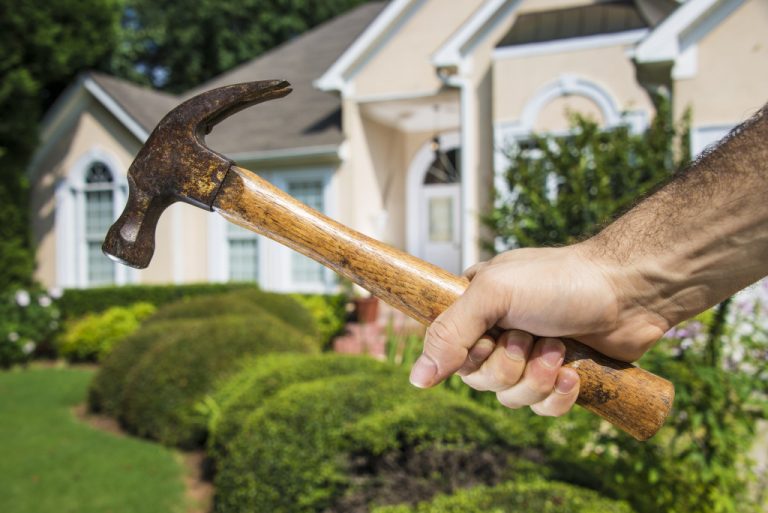- Weatherproofing is the process of protecting your home from harsh weather conditions.
- It can save you money, prevent damage to your property, and improve indoor air quality.
- Tips for weatherproofing include checking your roof, sealing gaps and cracks, insulating your home, upgrading windows and doors, and winterizing pipes.
- Hiring a reputable asphalt shingle roofing company can help ensure the quality and durability of your roof.
- Consult with a professional to determine the best weatherproofing measures for your home.
As the weather gets colder, ensuring that your home is ready to withstand the elements is essential. Weatherproofing your home can save you money on heating and repairs, prevent damage to your property, and keep you and your loved ones safe and comfortable. In this blog post, we’ll walk you through five practical home improvements to weatherproof your home and prepare for the winter months.
What is Home Weatherproofing?
Home weatherproofing is the process of protecting your home from elements like wind and rain. This is especially important in regions where weather can be unpredictable and severe.
Weatherproofing can include a variety of tasks, from sealing windows and doors to insulating walls and attics. Not only does weatherproofing protect your home from damage, but it can also save you money on energy bills by making your home more energy-efficient.
Benefits to Reap
When you weatherproof your home, you can expect a range of benefits. Some of the main ones include:
- Increased energy efficiency: By sealing air leaks and better insulating your home, you can keep warm air in the winter and cool air in the summer. This can result in significant savings on your heating and cooling bills.
- Protection from extreme weather events: Extreme weather events, such as heavy rain and strong winds, can take a toll on your home. Weatherproofing measures can help prevent water damage, leaks, and other structural damage.
- Improved indoor air quality: Proper insulation and sealing can also prevent drafts and keep out pollutants, improving the air quality inside your home.
Tips for Weatherproofing Your Home
You can weatherproof your home in several ways, and some are more effective than others. Here are five tips to help you get started:
Check Your Roof

Your roof is one of the most critical parts of your home, and it’s susceptible to damage from harsh weather like snow, sleet, and high winds. Ensure your roof is in good shape by checking it for damage, missing shingles, and weak spots.
Switching to asphalt shingle roofing would also be ideal if you haven’t done so already. This material is well-known for its durability and resistance to harsh weather conditions, making it a popular choice for homeowners. Hire a reputable asphalt shingle roofing company for any repairs or replacements. They can provide expert advice and top-quality materials to keep your roof in tip-top shape.
Seal Gaps and Cracks
The easiest way to weatherproof your home is to seal gaps and cracks in your walls, windows, and doors. You can use caulking or weatherstripping to close gaps around doors and windows, while expanding foam can fill more significant holes and cracks in walls.
These materials are inexpensive and easy to use, and they can help you save money on your heating bill by preventing drafts and cold air from entering your home.
Insulate Your Home
Insulating your home is crucial in weatherproofing, as it can help keep your home warm during winter. Inadequate insulation can cause heat to escape, leading to higher energy bills and a chilly house.
The most common areas to insulate are the attic, exterior walls, and basement. You can hire a professional or do it yourself, and the insulation cost depends on the size of your home and the type of insulation you choose.
Upgrade Your Windows and Doors

If your windows and doors are old or damaged, they could make your home less energy-efficient. Upgrading to energy-efficient windows and doors can help you save on energy bills, reduce noise pollution, and improve the overall look of your home. There are many styles and materials to choose from, so you’re sure to find one that fits your home’s aesthetics, budget, and functionality needs.
Winterize Your Pipes
Frozen pipes can result in costly repairs and severe water damage. Prepare for the winter months by winterizing your pipes. Turn off outdoor water sources, insulate outdoor pipes and fixtures, open kitchen and bathroom cabinets to allow for warm airflow, and consider installing a thermostatically controlled heat tape for your lines in the areas of the home where it gets the coldest.
Wrapping Up
Weatherproofing your home is essential and doesn’t have to be complex. Take these five practical home improvements and you can save money on energy bills, reduce the risk of damage to your home, and ensure the safety and comfort of you and your loved ones during the cold winter months. Remember, you can consult a professional to assess your home’s needs and determine the best steps for your situation.

